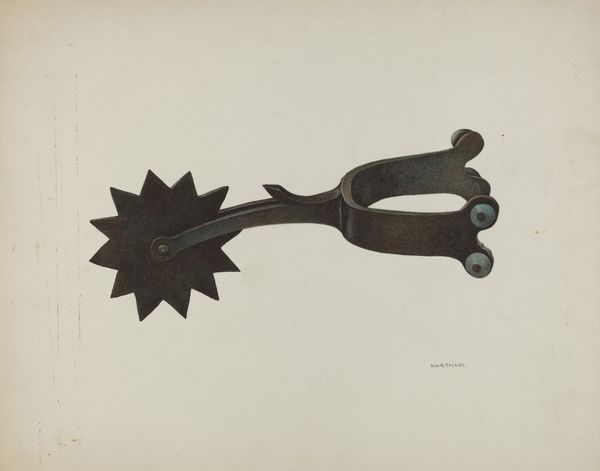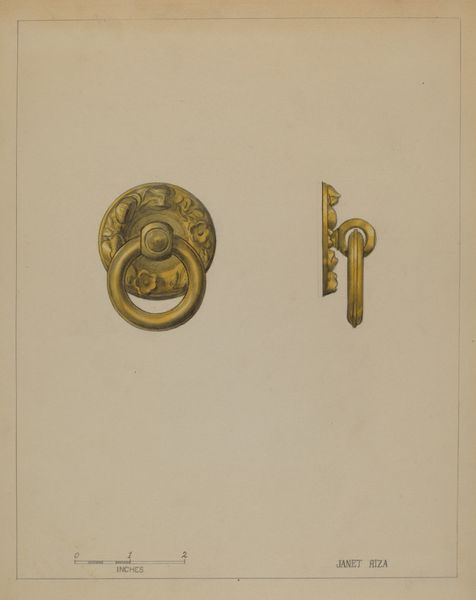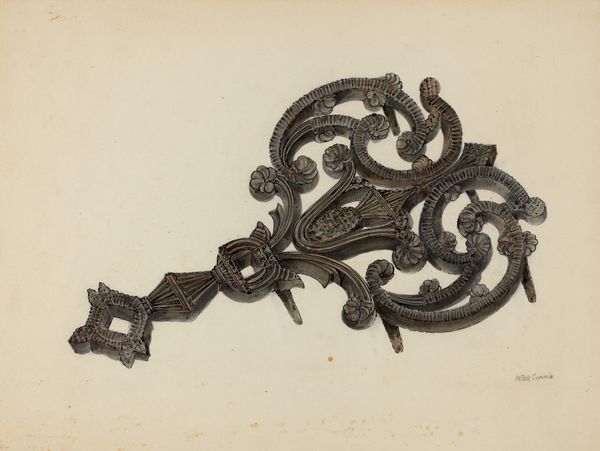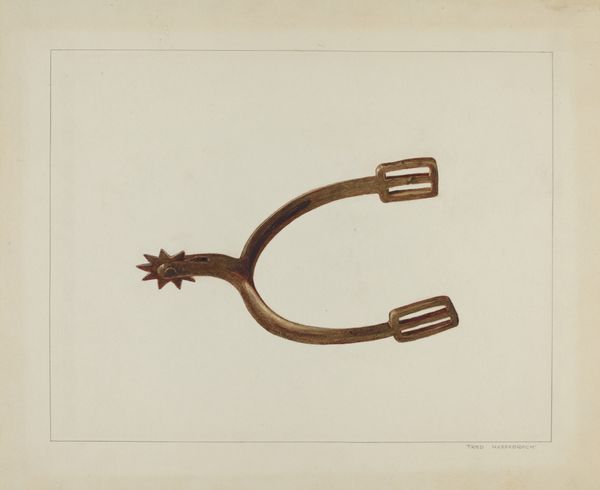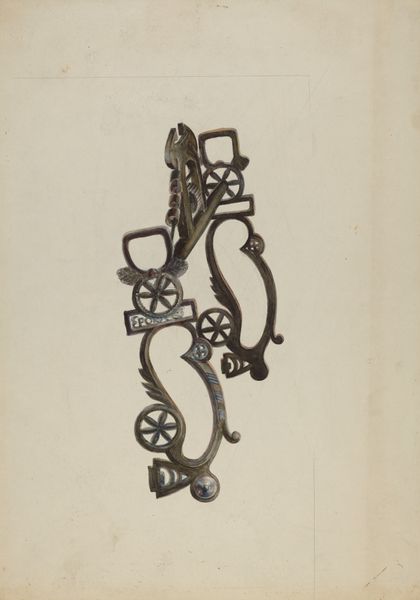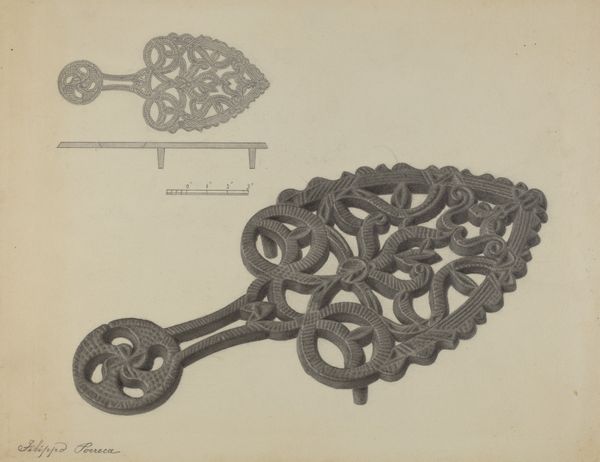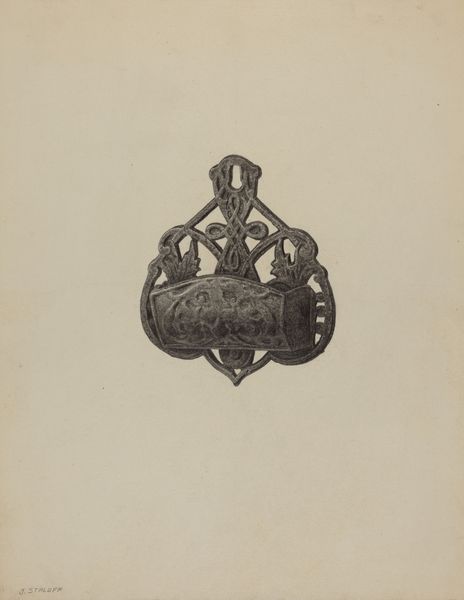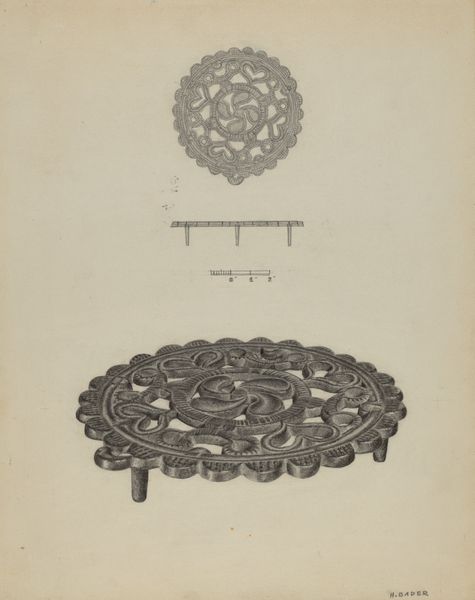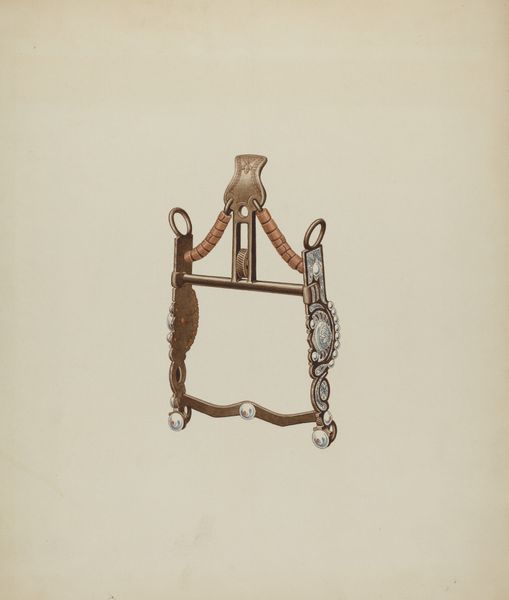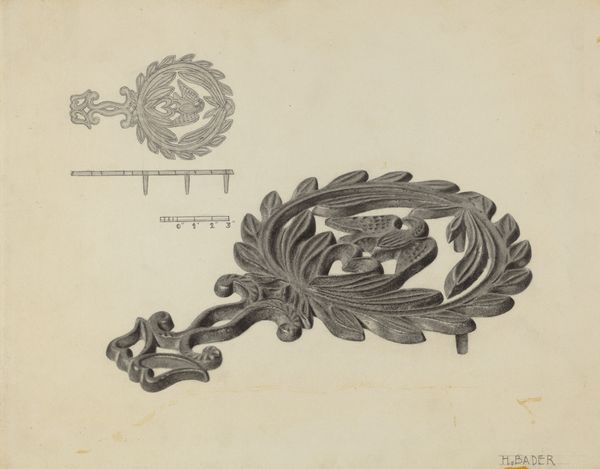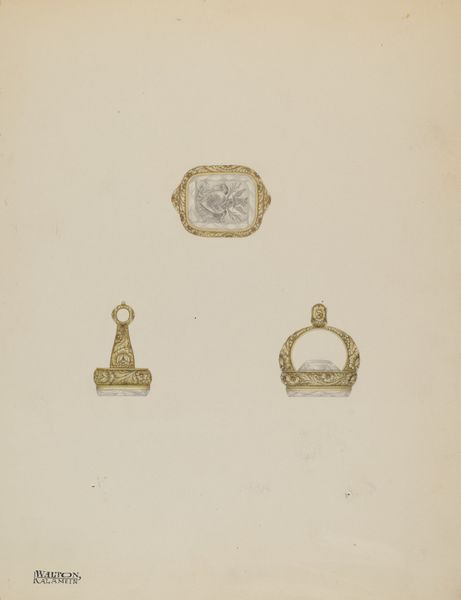
drawing, pencil, graphite
#
pencil drawn
#
drawing
#
pencil sketch
#
geometric
#
pencil
#
graphite
Dimensions: overall: 35.3 x 27.6 cm (13 7/8 x 10 7/8 in.) Original IAD Object: 8 3/8" long; 4 3/4" wide; 1 1/4" high
Copyright: National Gallery of Art: CC0 1.0
Curator: We're looking at "Flat Iron Holder," a drawing rendered in pencil and graphite, believed to be from around 1940 and credited to Milton Grubstein. It showcases the detailed design for, as the name suggests, a holder for a flat iron. Editor: My first impression is the delicacy of the execution, particularly the refined ornamentation around what otherwise appears to be a humble, domestic object. The head motif seems quite elevated for such a utilitarian piece. Curator: It does introduce an interesting dialogue between high and low art. Consider the context: this was around the time the concept of industrial design was truly solidifying, where artistic principles started being applied to mass-produced, everyday items. Editor: That head, though… it strongly reminds me of classical Greco-Roman sculpture, a deity perhaps. Its presence here almost elevates the act of ironing – typically a chore – to a sacred or important task. Is it symbolic of order and refinement emerging from chaos, the creases being tamed by heat and pressure? Curator: Potentially. This type of visual borrowing was not uncommon in that era. It provided a veneer of sophistication and prestige, imbuing the functional with cultural capital. The addition would increase market appeal among status-conscious consumers. Editor: It speaks to a deeper psychological need too, I think. Perhaps the desire for control and beauty in a rapidly changing world, where technology and modernity were simultaneously thrilling and unsettling. Even mundane rituals required layers of meaning to offer emotional stability. Curator: And from a social perspective, the ideal of domesticity in the 1940s was heavily influenced by consumer culture and notions of the "perfect" home. The object itself, beautifully ornamented, subtly reinforced gender roles. Editor: So, an apparently simple drawing of a functional object ends up being an interesting commentary on aspiration and visual language. Fascinating how much information can be embedded in a single object through iconography. Curator: Indeed, understanding such connections helps us recognize the forces that shaped both art and society in a specific historical time.
Comments
No comments
Be the first to comment and join the conversation on the ultimate creative platform.

